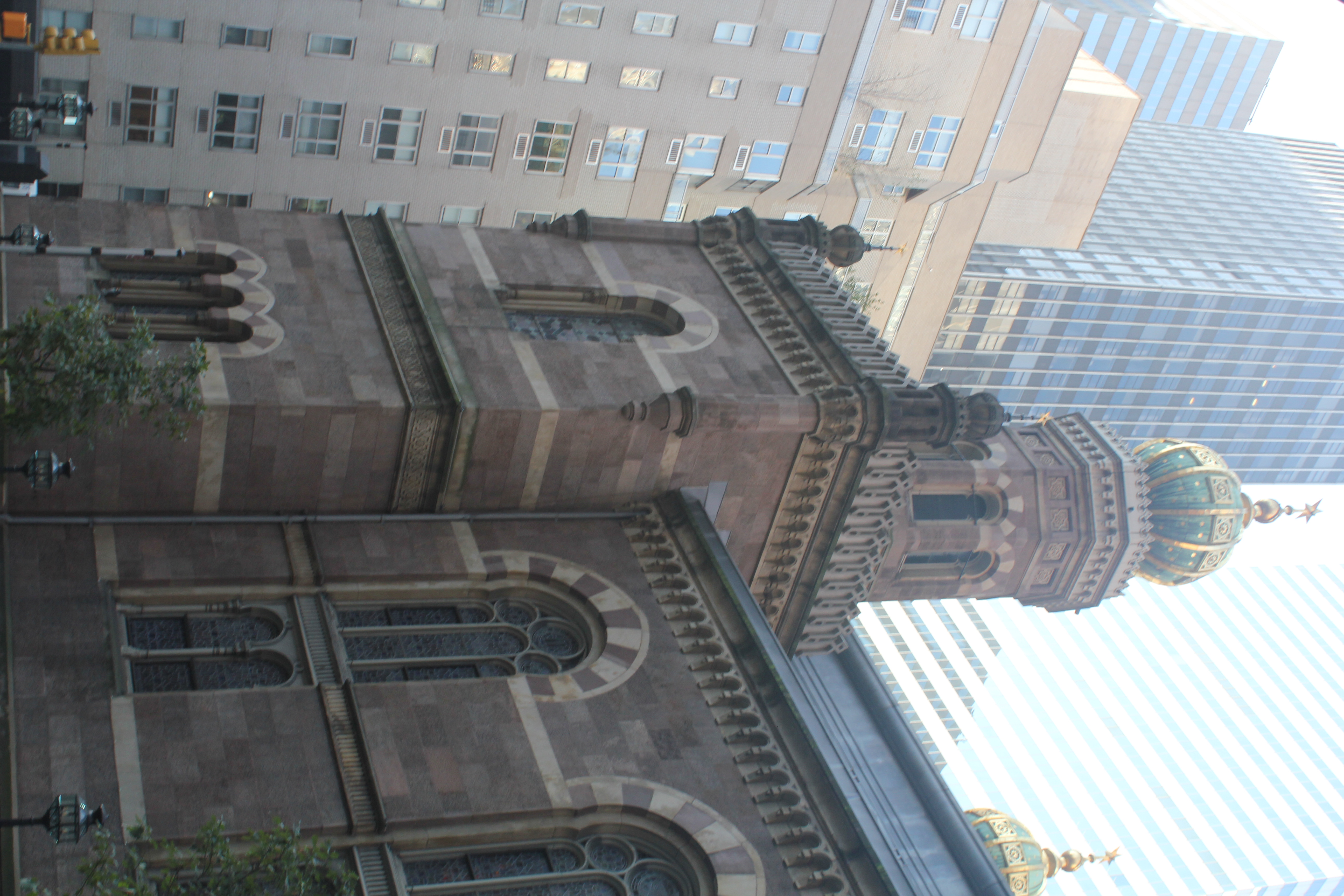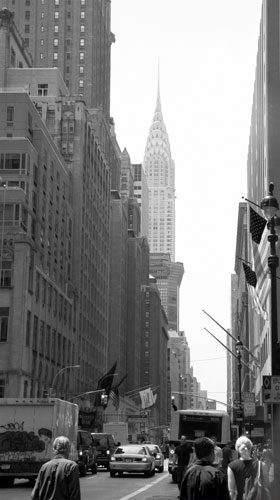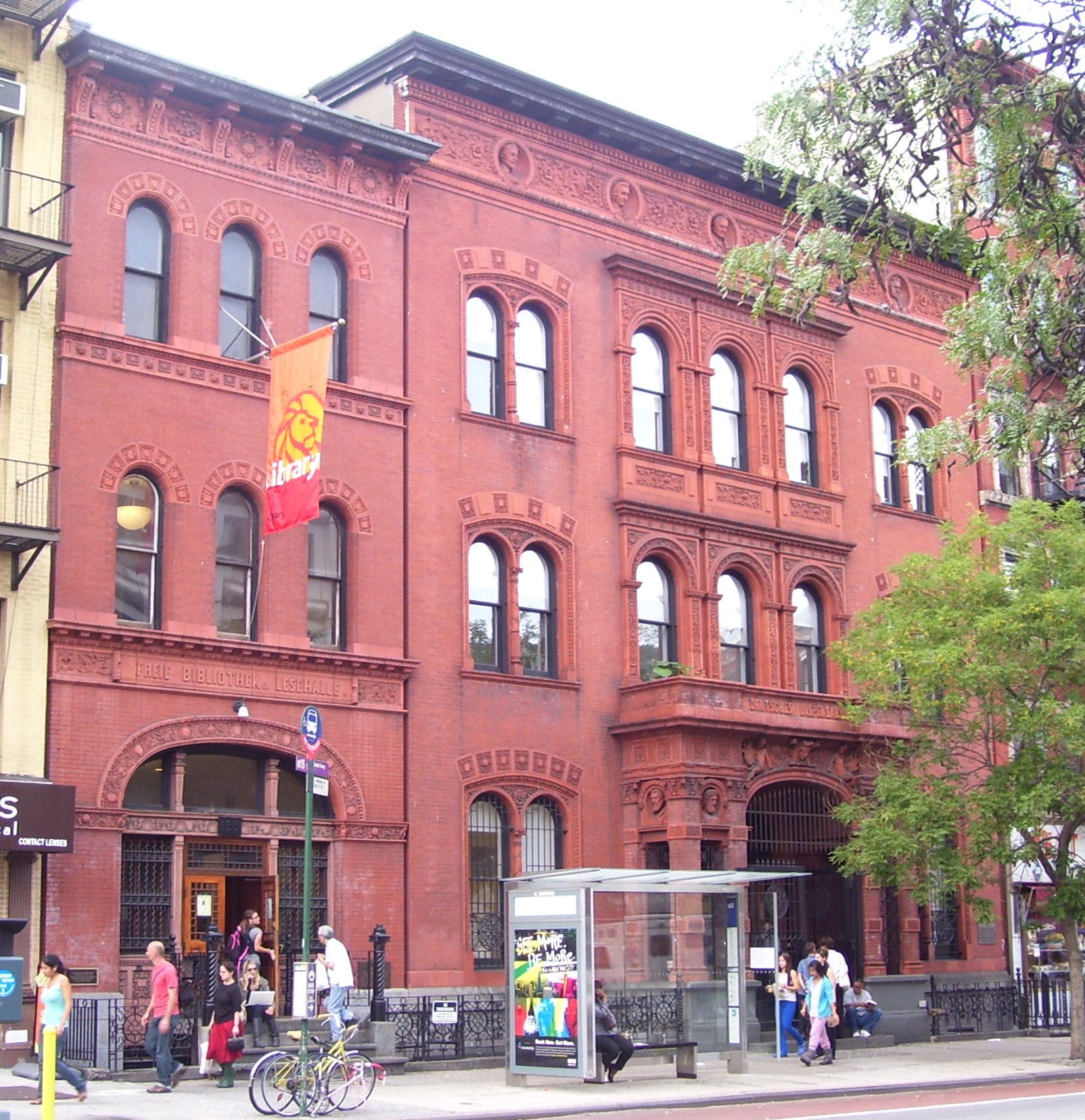|
Congregation Ahawath Chesed Shaar Hashomayim
Central Synagogue (formerly Congregation Ahawath Chesed Shaar Hashomayim; colloquially Central) is a Reform Jewish congregation and synagogue at 652 Lexington Avenue, at the corner with 55th Street, in the Midtown Manhattan neighborhood of New York City. The current congregation was formed in 1898 through the merger of two 19th-century synagogues: Shaar Hashomayim and Ahawath Chesed. The synagogue building was constructed from 1870 to 1872 for Ahawath Chesed. , Angela Buchdahl has been Central's senior rabbi. Shaar Hashomayim was founded in 1839 by German Jews, while Ahawath Chesed was founded in 1846 by Bohemian Jews. Both congregations originally occupied several sites on the Lower East Side of Manhattan. Central was constructed as the fifth building of Ahawath Chesed, whose members had moved northward during the late 19th century. Though the congregations originally held services in German, they had become largely Anglophone by the time of their merger. Ahawath Chesed Shaa ... [...More Info...] [...Related Items...] OR: [Wikipedia] [Google] [Baidu] |
Lexington Avenue
Lexington Avenue, often colloquially abbreviated as "Lex", is an avenue on the East Side (Manhattan), East Side of Manhattan in New York City. The avenue carries southbound one-way traffic from East 131st Street (Manhattan), 131st Street to Gramercy Park at List of numbered streets in Manhattan#20th to 22nd streets, East 21st Street. Along its , 110-block route, Lexington Avenue runs through Harlem, Carnegie Hill, the Upper East Side, Midtown (Manhattan), Midtown, and Murray Hill, Manhattan, Murray Hill to a point of origin that is centered on Gramercy Park. South of Gramercy Park, the axis continues as Irving Place from 20th Street (Manhattan), 20th Street to East 14th Street (Manhattan), 14th Street. Lexington Avenue was not one of the streets included in the Commissioners' Plan of 1811 street grid, so the addresses for cross streets do not start at an even hundred number, as they do with avenues that were originally part of the plan. History Both Lexington Avenue and Irving ... [...More Info...] [...Related Items...] OR: [Wikipedia] [Google] [Baidu] |
New York City Designated Landmark
The New York City Landmarks Preservation Commission (LPC) is the New York City agency charged with administering the city's Landmarks Preservation Law. The LPC is responsible for protecting New York City's architecturally, historically, and culturally significant buildings and sites by granting them landmark or historic district status, and regulating them after designation. It is the largest municipal preservation agency in the nation. , the LPC has designated more than 37,800 landmark properties in all five boroughs. Most of these are concentrated in historic districts, although there are over a thousand individual landmarks, as well as numerous interior and scenic landmarks. Mayor Robert F. Wagner Jr. first organized a preservation committee in 1961, and the following year, created the LPC. The LPC's power was greatly strengthened after the Landmarks Law was passed in April 1965, one and a half years after the destruction of Pennsylvania Station. The LPC has been invol ... [...More Info...] [...Related Items...] OR: [Wikipedia] [Google] [Baidu] |
Max Lilienthal
Max Lilienthal (November 6, 1815 – April 6, 1882) was a German-born adviser for the reform of Jewish schools in Russia and later a rabbi and proponent of Reform Judaism in the United States. Life and religion Work for Russian Government Lilienthal held a doctorate from the University of Munich when Ludwig Philippson recommended him to head a school inspired by the Enlightenment in Riga, then a part of the Russian Empire. He arrived in Riga in 1840. He made a greater impact with the Minister of National Education, Sergey Uvarov, than he did with the school. The next year, Uvarov summoned Lilienthal to serve as the Ministry of National Education's "learned Jew." Lilienthal's most important task was to convince the Jews of the importance of enlightened education. Lilienthal summoned committees from the various Jewish communities in the Pale of Settlement to provide recommendations on the reform of the schools, but the notion of reform was so controversial that many boycotted. N ... [...More Info...] [...Related Items...] OR: [Wikipedia] [Google] [Baidu] |
Salem Fields Cemetery
Salem Fields Cemetery is a Jewish cemetery located at 775 Jamaica Avenue in the Cypress Hills neighborhood of Brooklyn, New York, United States, within the Cemetery Belt. It was founded in 1852 by Congregation Emanu-El of New York. Salem Fields is the final resting place for many of the prominent German-Jewish families of New York City. Among those buried in the cemetery are members of the Fox family, founders of Fox Film; the Guggenheim family, who were involved in mining, newspapers, and Guggenheim museums; the Lewisohn family, who were involved in mining, banking, and philanthropy; and the Shubert family, which led a large theatrical empire. Architectural historian Fredric Bedoire, Professor at the Royal University of Fine Arts in Stockholm, compared the "beautiful" Salem Fields to the architecturally notable mausoleums and undulating landscape of Père Lachaise Cemetery in Paris. Architect Henry Beaumont Herts designed the Guggenheim family mausoleum, modeled after t ... [...More Info...] [...Related Items...] OR: [Wikipedia] [Google] [Baidu] |
Congregation Rodeph Sholom (Manhattan)
Congregation Rodeph Sholom is a Reform Jewish synagogue at 7 West 83rd Street on the Upper West Side of Manhattan in New York City, New York. Founded in 1842 by German Jewish immigrants, it is one of the oldest synagogues in the United States. History City directories from the years 1845 to 1853 list the congregation as having met at 156 Attorney Street. The first building constructed by Rodeph Sholom, at 8 Clinton Street on the Lower East Side in 1853, is still in use by Congregation Chasam Sopher. It is the second-oldest surviving synagogue building in New York City and the fifth-oldest synagogue building in the United States. Rodeph Sholom moved to Lexington Avenue and 63rd Street, to a new Victorian Romanesque building designed by D. & J. Jardine and built in 1872–73 for Ansche Chesed. Simeon Abrahams conveyed land to the congregation for a burial ground in 1842. This cemetery was on 88th Street between Madison and Park Avenues. By 1879, there had not been a burial ... [...More Info...] [...Related Items...] OR: [Wikipedia] [Google] [Baidu] |
Jewish Cemetery
A Jewish cemetery ( ''beit almin'' or ''beit kvarot'') is a cemetery where Jews are buried in keeping with Halakha, Jewish tradition. Cemeteries are referred to in several different ways in Hebrew, including ''beit kevarot'' (house of sepulchers), ''beit almin'' (eternal home), ''beit Olam Haba, olam [haba]'' (house of afterlife), ''beit chayyim'' (house of the living) and ''beit shalom'' (house of peace). The land of the cemetery is considered holy and a special consecration ceremony takes place upon its inauguration. According to Jewish tradition, Jewish burial grounds are sacred sites and must remain undisturbed in perpetuity. Establishing a cemetery is one of the first priorities for a new Jewish community. A Jewish cemetery is generally purchased and supported with communal funds. Placing small stones on graves is a Jewish tradition equivalent to bringing flowers or wreaths to graves. Flowers, spices, and twigs have sometimes been used, but the stone is preferred be ... [...More Info...] [...Related Items...] OR: [Wikipedia] [Google] [Baidu] |
Rabbi
A rabbi (; ) is a spiritual leader or religious teacher in Judaism. One becomes a rabbi by being ordained by another rabbi—known as ''semikha''—following a course of study of Jewish history and texts such as the Talmud. The basic form of the rabbi developed in the Pharisees, Pharisaic (167 BCE–73 CE) and Talmudic (70–640 CE) eras, when learned teachers assembled to codify Judaism's written and oral laws. The title "rabbi" was first used in the first century CE. In more recent centuries, the duties of a rabbi became increasingly influenced by the duties of the Clergy, Protestant Christian minister, hence the title "pulpit rabbis." Further, in 19th-century Germany and the United States, rabbinic activities such as sermons, pastoral counseling, and representing the community to the outside all increased in importance. Within the various Jewish denominations, there are different requirements for rabbinic ordination and differences in opinion regarding who is recognized as a ... [...More Info...] [...Related Items...] OR: [Wikipedia] [Google] [Baidu] |
Ansche Chesed
Ansche Chesed is a Conservative synagogue located at West End Avenue and 100th Street on the Upper West Side of Manhattan in New York City, New York, United States. History The congregation was founded in 1828 by a group of German, Dutch, and Polish Jews who split off from Congregation B'nai Jeshurun. Before 1850, the congregation met at various locations, including 32 and 38 Henry Street. By 1850, when the congregation erected the building on Norfolk Street, on Manhattan's Lower East Side, that is now the Angel Orensanz Center, there had been further secessions, and the congregation was composed of immigrants from Germany. It was also the largest in the United States. In 1874, the congregation merged with Congregation Adas Jeshurun of 221 West 39th Street to form Congregation Beth-El. This group met at a newly constructed synagogue in Yorkville, on the corner of Lexington Avenue and 63rd Street, but by the more traditional German Jews of the congregation reconstituted Ansc ... [...More Info...] [...Related Items...] OR: [Wikipedia] [Google] [Baidu] |
New York City Landmarks Preservation Commission
The New York City Landmarks Preservation Commission (LPC) is the Government of New York City, New York City agency charged with administering the city's Historic preservation, Landmarks Preservation Law. The LPC is responsible for protecting New York City's architecturally, historically, and culturally significant buildings and sites by granting them landmark or historic district status, and regulating them after designation. It is the largest municipal preservation agency in the nation. , the LPC has designated Lists of New York City landmarks, more than 37,800 landmark properties in all Boroughs of New York City, five boroughs. Most of these are concentrated in historic districts, although there are over a thousand individual landmarks, as well as numerous interior and New York City scenic landmarks, scenic landmarks. Mayor Robert F. Wagner Jr. first organized a preservation committee in 1961, and the following year, created the LPC. The LPC's power was greatly strengthened af ... [...More Info...] [...Related Items...] OR: [Wikipedia] [Google] [Baidu] |
Ashkenazi Jews
Ashkenazi Jews ( ; also known as Ashkenazic Jews or Ashkenazim) form a distinct subgroup of the Jewish diaspora, that emerged in the Holy Roman Empire around the end of the first millennium CE. They traditionally speak Yiddish, a language that originated in the 9th century, and largely migrated towards northern and eastern Europe during the late Middle Ages due to persecution. Hebrew was primarily used as a literary and sacred language until its 20th-century revival as a common language in Israel. Ashkenazim adapted their traditions to Europe and underwent a transformation in their interpretation of Judaism. In the late 18th and 19th centuries, Jews who remained in or returned to historical German lands experienced a cultural reorientation. Under the influence of the Haskalah and the struggle for emancipation, as well as the intellectual and cultural ferment in urban centres, some gradually abandoned Yiddish in favor of German and developed new forms of Jewish relig ... [...More Info...] [...Related Items...] OR: [Wikipedia] [Google] [Baidu] |
Little Germany, Manhattan
Little Germany, known in German as and and called Dutchtown by contemporary non-Germans, was a German immigrant neighborhood on the Lower East Side and East Village neighborhoods of Manhattan in New York City. The demography of the neighborhood began to change in the late 19th century, as non-German immigrants settled in the area. A steady decline of Germans among the population was accelerated in 1904, when the '' General Slocum'' disaster decimated the social core of the population with the loss of more than 1,000 lives. Growth Beginning in the 1840s, large numbers of German immigrants entering the United States provided a constant population influx for Little Germany. In the 1850s alone, 800,000 Germans passed through New York. By 1855 New York had the third largest German population of any city in the world, outranked only by Berlin and Vienna. The German immigrants differed from others in that they usually were educated and had marketable skills in crafts. More than h ... [...More Info...] [...Related Items...] OR: [Wikipedia] [Google] [Baidu] |
Gothic Church
Gothic architecture is an architectural style that was prevalent in Europe from the late 12th to the 16th century, during the High Middle Ages, High and Late Middle Ages, surviving into the 17th and 18th centuries in some areas. It evolved from Romanesque architecture and was succeeded by Renaissance architecture. It originated in the Île-de-France and Picardy regions of northern France. The style at the time was sometimes known as ''opus Francigenum'' (); the term ''Gothic'' was first applied contemptuously during the later Renaissance, by those ambitious to revive the Classical architecture, architecture of classical antiquity. The defining design element of Gothic architecture is the Pointed arch (architecture), pointed arch. The use of the pointed arch in turn led to the development of the pointed rib vault and flying buttresses, combined with elaborate tracery and stained glass windows. At the Abbey of Basilica of Saint-Denis, Saint-Denis, near Paris, the choir was rec ... [...More Info...] [...Related Items...] OR: [Wikipedia] [Google] [Baidu] |








